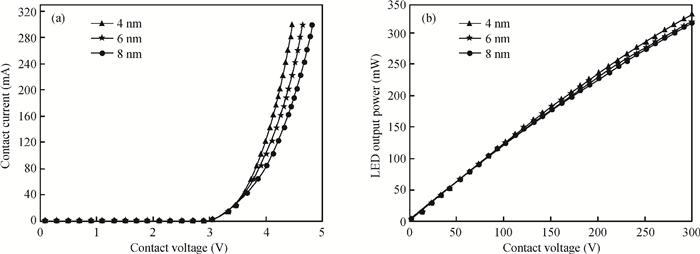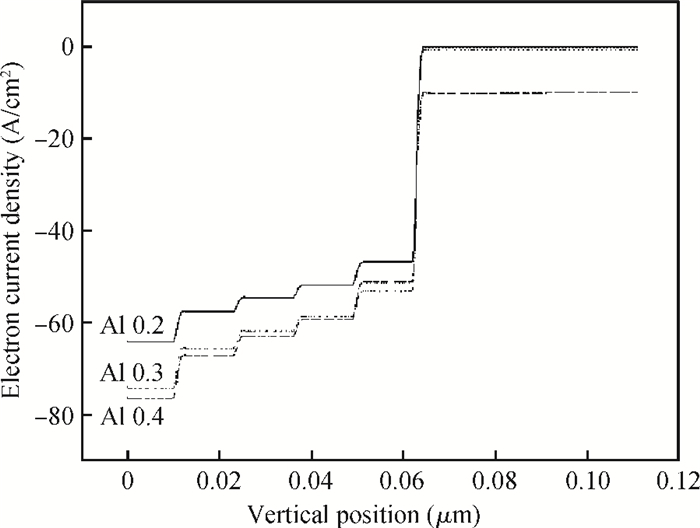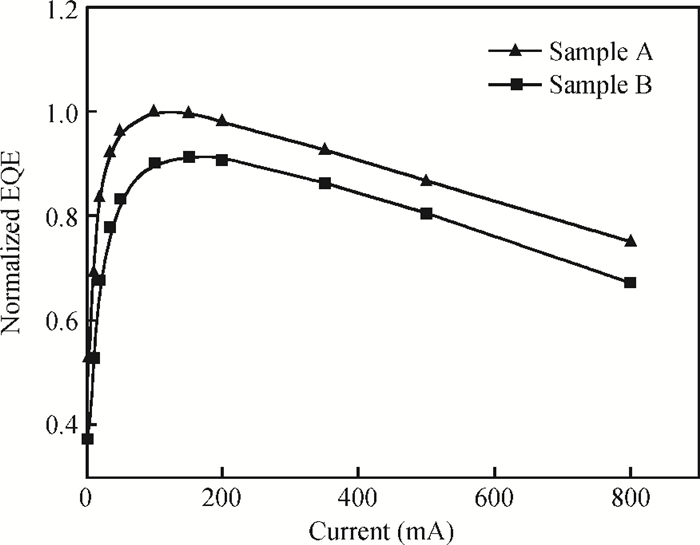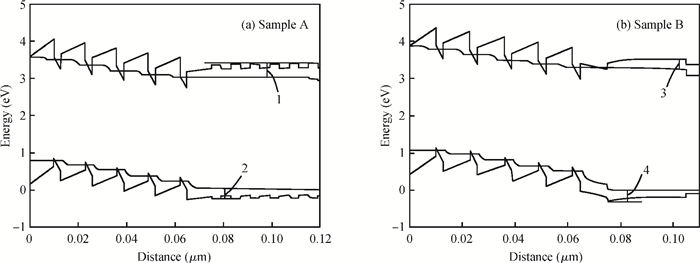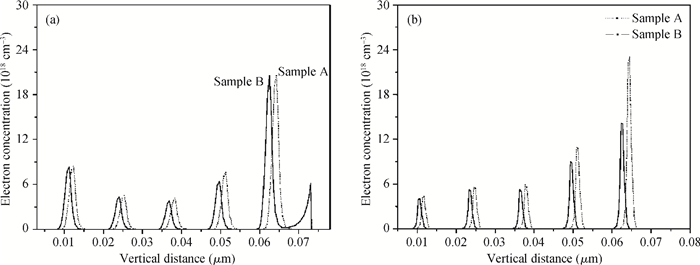| Citation: |
Na Liu, Xiaoyan Yi, Meng Liang, Enqing Guo, Xiangxu Feng, Zhao Si, Xiaoli Ji, Xuecheng Wei, Hongxi Lu, Zhiqiang Liu, Ning Zhang, Junxi Wang, Jinmin Li. Effects of the p-AlInGaN/GaN superlattices' structure on the performance of blue LEDs[J]. Journal of Semiconductors, 2014, 35(2): 024010. doi: 10.1088/1674-4926/35/2/024010
****
N Liu, X Y Yi, M Liang, E Q Guo, X X Feng, Z Si, X L Ji, X C Wei, H X Lu, Z Q Liu, N Zhang, J X Wang, J M Li. Effects of the p-AlInGaN/GaN superlattices\' structure on the performance of blue LEDs[J]. J. Semicond., 2014, 35(2): 024010. doi: 10.1088/1674-4926/35/2/024010.
|
Effects of the p-AlInGaN/GaN superlattices' structure on the performance of blue LEDs
DOI: 10.1088/1674-4926/35/2/024010
More Information
-
Abstract
The advantages of the p-AlInGaN/GaN superlattices' (SLs) structure as an electron blocking layer (EBL) for InGaN blue light-emitting diodes (LEDs) were studied by experiment and APSYS simulation. Electroluminescence (EL) measurement results show that the LEDs with the p-AlInGaN/GaN SLs' structure EBL exhibited better optical performance compared with the conventional AlGaN EBL due to the enhancement of hole concentration and hole carrier transport efficiency, and the confinement of electrons' overflow between multiple quantum-wells (MQWs) and EBL.-
Keywords:
- EBL,
- p-AlInGaN/GaN SLs,
- multiple quantum-wells
-
References
[1] Ji Panfeng, Liu Naixin, Wei Tongbo, et al. Improvement of the efficiency droop of GaN-LEDs using an AlGaN/GaN superlattice insertion layer. Journal of Semiconductors, 2011, 32(11):114006 doi: 10.1088/1674-4926/32/11/114006[2] Piprek J. Efficiency droop in nitride-based light-emitting diodes. Phys Status Solidi A, 2010, 207(10):2217 doi: 10.1002/pssa.v207:10[3] Zhang Yiyun, Zheng Haiyang, Guo Enqing, et al. Effects of light extraction efficiency to the efficiency droop of InGaN-based light-emitting diodes. J Appl Phys, 2013, 113:014502 doi: 10.1063/1.4772669[4] Kim M H, Schubert M F, Dai Q, et al. Origin of efficiency droop in GaN-based light-emitting diodes. Appl Phys Lett, 2007, 91:183507 doi: 10.1063/1.2800290[5] Rozhansky I V, Zakheim D A. Analysis of processes limiting quantum efficiency of AlGaInN LEDs at high pumping. Phys Status Solidi A, 2007, 204:227 doi: 10.1002/pssa.v204:1[6] Ryu H Y, Lee J M. Effects of two-step Mg doping in p-GaN on efficiency characteristics of InGaN blue light-emitting diodes without AlGaN electron-blocking layers. Appl Phys Lett, 2013, 102:181115 doi: 10.1063/1.4804382[7] Zhang N, Liu Z, Wei T, et al. Effect of the graded electron blocking layer on the emission properties of GaN-based green light-emitting diodes. Appl Phys Lett, 2012, 100:053504 doi: 10.1063/1.3681797[8] Zhang L, Ding K, Liu N X, et al. Theoretical study of polarization-doped GaN-based light-emitting diodes. Appl Phys Lett, 2011, 98:101110 doi: 10.1063/1.3565173[9] Liu Z, Ma J, Yi X, et al. p-InGaN/AlGaN electron blocking layer for InGaN/GaN blue light-emitting diodes. Appl Phys Lett, 2012, 101:261106 doi: 10.1063/1.4773187[10] Jang J S. High output power GaN-based light-emitting diodes using an electrically reverse-connected p-Schottky diode and p-InGaN-GaN superlattice. Appl Phys Lett, 2008, 93:081118 doi: 10.1063/1.2977471 -
Proportional views





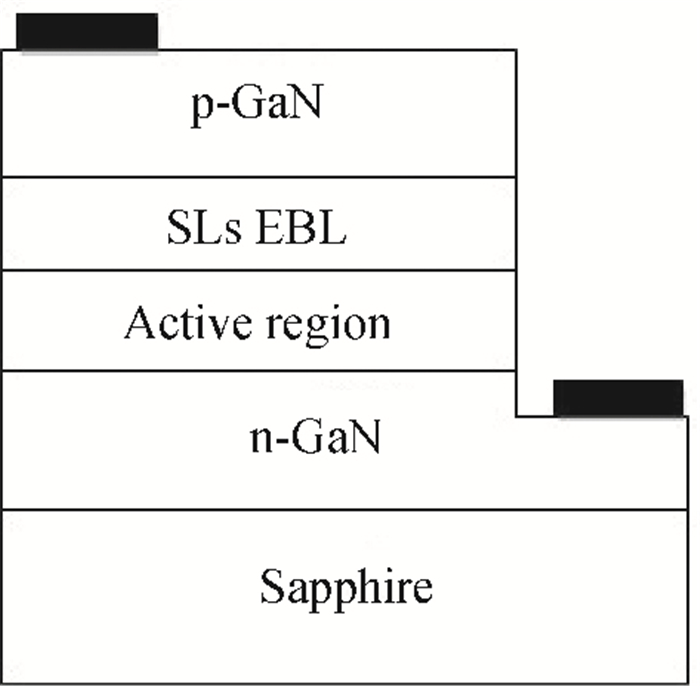
 DownLoad:
DownLoad:
